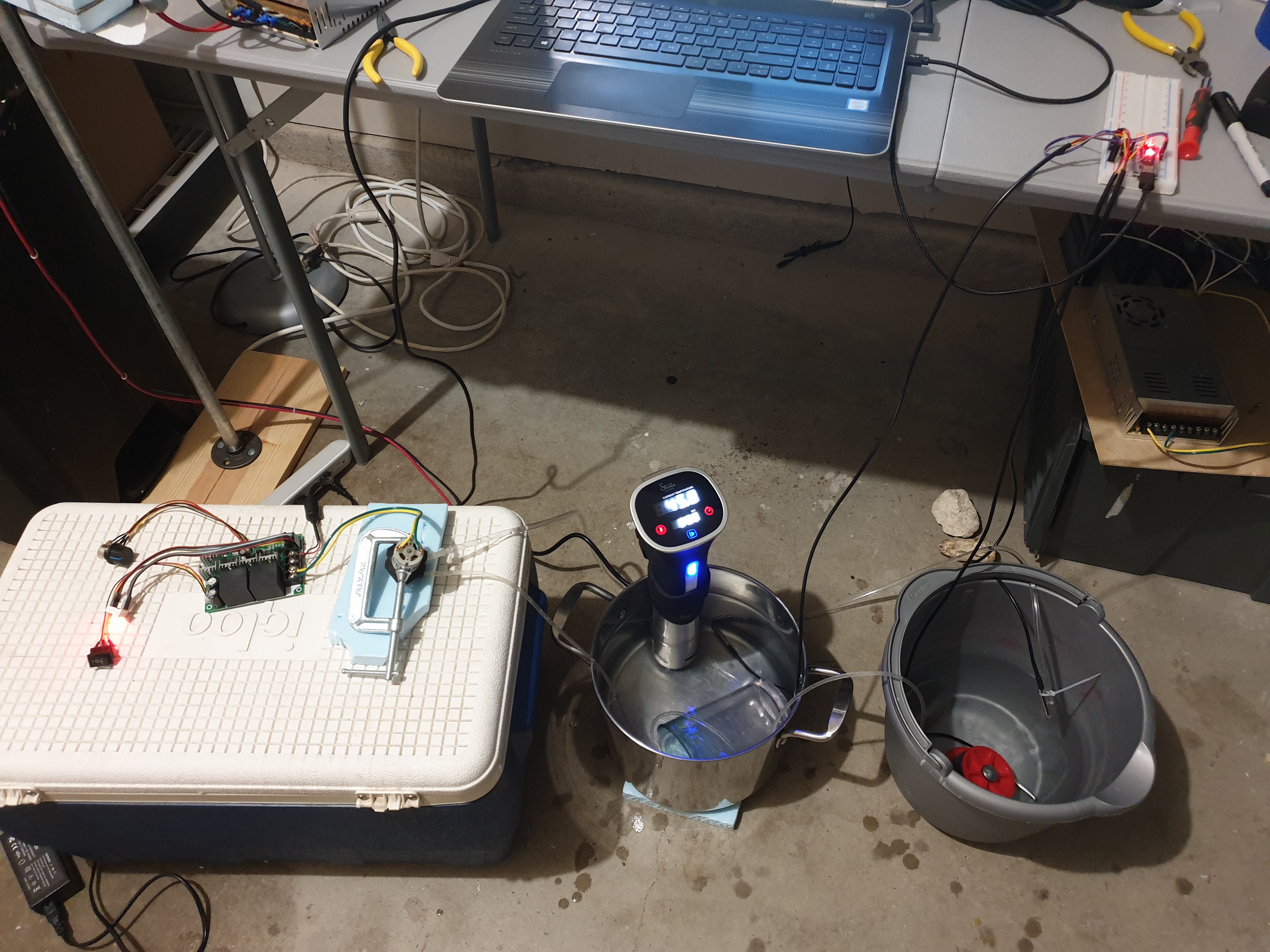Testing this afternoon with a sous vide cooker shows a more promising path forward than the two hot plate design that has been in development for the last three months.

The sous vide cooker (center of image with lit display) maintains the water bath at a constant temperature. The set point temperature is selectable by the user. In the water bath I submerged 660mm of IV tubing. 660mm is the same length of IV tubing used by the two hot plate prototype. Then the peristaltic pump pulls water from the far right bucket, through the IV tubing in the temperature bath, and back to the bucket. There is temperature sense in the water bath, in the bucket, and at the IV tube outlet.
Results from today's testing show that this technique can warm the fluid flowing in the IV tube from 4°C to 38°C at 20mL/min with the water bath at a 70°C set point. The two hot plate design could only warm fluid from 4°C to 24°C at 20mL/min with a 105°C heater set point. Using the same length of IV tubing, the sous vide method uses a 35°C lower set point and achieves a 14°C higher temperature rise!
It accomplishes this through a higher rate of heat transfer between the heating elements and the IV fluid. As a liquid, water achieves maximum contact with the outside surface of the IV tubing. More contact area -> lower thermal resistance. The sous vide cooker has a agitator that circulates water through the heating elements and mixes up the water in the bath. Mixing the water ensures that the water that rejected heat to the IV fluid is continuously replaced by warmer water. Higher flow rate across outside of IV tubing -> higher temperature at the outside surface of the IV tubing. Both the lower thermal resistance and higher temperature differential results in a higher rate of heat transfer to the IV fluid.
While I have not yet fully vetted the sous vide design solution, there are a few additional benefits that are clear already. The first and most important is that the sous vide method has the potential to cost less in materials than the two hot plate design. It packages a heating element, adjustable temperature control, a motor, and temperature display in a water resistant, easy-to-clean enclosure for under $50. That's about 4X more functionality than the two hot plate design and at a lower price point. In addition, the adjustable temperature control provides opportunity for the user to better tune the set point to match the IV fluid flow rate that is being used.
The sous vide method is certainly promising, but it does not have all the safety features that are going to be required to use a device like this in a medical setting. I already have an idea of what is required to "hack" sous vide cookers for safe IV fluid warming and will flesh out these ideas in the next few project logs.
 John Opsahl
John Opsahl
Discussions
Become a Hackaday.io Member
Create an account to leave a comment. Already have an account? Log In.